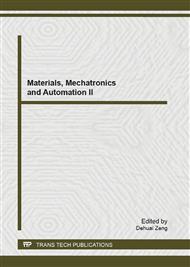p.92
p.99
p.105
p.112
p.120
p.128
p.134
p.140
p.146
A Quality Monitoring Online System Using an Early Warning Abnormal Trend Distribution: A Thickness Measurement Case Study Using a LVDT
Abstract:
To assure product quality, an early warning and inspection system to predict the variation (trend) of a products quality (i.e. the product thickness) in the manufacturing process is necessary. Here, a manual online measurement of a production line installed with an online automatic warning system that will prevent manually accumulated errors from occurring is presented. Using this system, a quality trend profile will be made. The abnormal trend distribution will be obtained by randomly selecting the period of the quality trend profile and translating it into a time distribution bar chart. The monitoring online system will be pre-warned via the abnormal trend distribution. A products thickness can be obtained using a linear variable differential transformer (LVDT). The analogue signal will be transmitted to the AD converter of the PLCs analogue input channel. The digital signal will be transmitted from the series port to the remote PC via the web control unit. A profile of the products thickness measured by the LVDT will be monitored online and dynamically exhibited in the web-based remote system by using an embedded Javascript, an HTML, and a web control unit. The upper/lower thresholds will be preset in the product thickness profile. In addition, the quality monitoring system will be pre-warned via the time distribution bar chart when the abnormal trend distribution occurs. Consequently, the web-base monitoring system can be extended to remotely connect to all the LVDT devices.
Info:
Periodical:
Pages:
120-127
Citation:
Online since:
August 2013
Authors:
Keywords:
Price:
Сopyright:
© 2013 Trans Tech Publications Ltd. All Rights Reserved
Share:
Citation:


